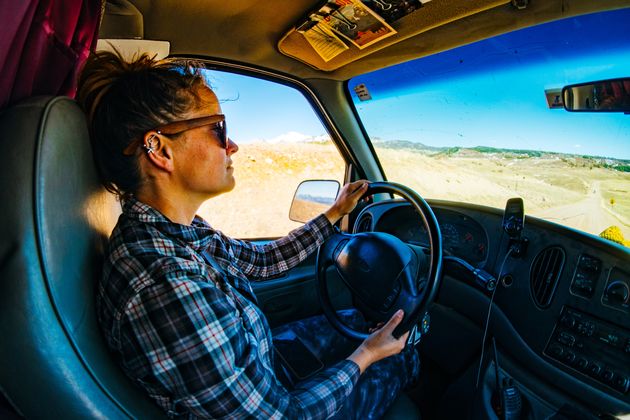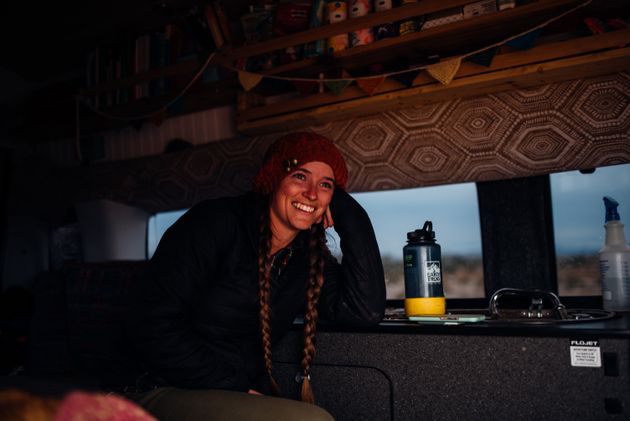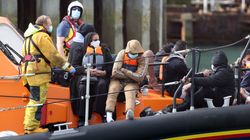
If my first year of living in my van had been as hard as my second year has been, I probably would have ditched it for sticks and bricks.
My shift into #vanlife was a few years in the making. I’d first learned about living in a vehicle in 2011 after meeting a friend who lived in a tiny sedan with a big husky. I immediately added it to my bucket list. For the next few years, I did all the research, the test-driving, and began downsizing, but then found that either a job or a partner made it “inconvenient” to live on the road. In December of 2017, I decided enough was enough. In 2018, I was going to find the van.
I test-drove my first van in January, starting to get rid of everything I owned immediately, and bought my current home in August. I spent the next six months tearing it apart and putting it back together.
I moved into my 1997 Ford E-350 on January 1, 2019, and I had the usual challenges associated with drastic minimising, living in 60 square feet, and having a home that needs regular mechanic visits.
I no longer have running water or endless electricity. Rationing both and prioritising necessities over luxuries is a balancing act. Ensuring that I park just so to give my solar panel as much sun as it can soak up is a new part of my routine.
Finding a different place to sleep every night became a top priority and I had to learn how to vet places using the technology and resources available to me prior to arrival, as well as trusting my gut when I landed someplace new. This particular challenge was compounded by the fact that I needed to ensure my temporary home had enough cell service that I could do my work as a freelance writer, or be near a cafe to commute to in the mornings.
There were both big and small challenges associated with relying on the weather for the first time and learning the limitations of the van and myself. But even with all the newness and struggle, it was largely a positive, empowering year.
2020 has been… different.
Covid-19 has ended many lives. It has also disrupted the lives of the living in a big way ― millions have been furloughed or laid off, while others are working more than ever. Some have had to cancel their weddings, while others transitioned to socially distanced Zoom ceremonies. My stationary friends have postponed international travel and are exploring their hometowns.
But my road friends and I? We’re dealing with a host of totally different problems.
In some ways, #vanlife is looking more and more appealing ― move into a van and drive away from the pandemic’s impacts! Wake up next to a beautiful alpine lake with no neighbours in sight! Never wear a mask again, don’t worry about germs, and watch a postcard-worthy sunset every night!
It’s not as easy as it may seem. While choosing this lifestyle is a huge privilege, it comes with hurdles beyond the Instagram-able exotic location or lounging in a bikini.
As a vanner, I spend most of my time living on public lands. I love a good Forest Service or Bureau of Land Management camp spot and finding private clearings with cell service can be a gold nugget you never want to let go of.
Since most people are sick of being cooped up inside their homes, they’re flocking to the wilderness. Some developed campsites are still closed due to COVID-19 precautions and the dispersed camping is being used to within an inch of its limits. Many of my favourite spots are now overrun with locals trying to get a taste of freedom.
I certainly don’t blame them, but my tiny slice of camp-able space with enough cell service to do my job is getting smaller and smaller. Many times this year I’ve been forced to drive up to six extra hours in a single day to find available spots or have been relegated to the less-glamorous Walmart or rest area when none were found.

Full-time nomads also rely on services like rec centers and gyms to maintain our hygiene. When gyms were shut down country-wide, our hair got greasier. Instead of showering every few days, now I’m lucky if I wash my hair once a week.
Baby wipes to clean my body and a solar shower (basically a black plastic bag with a hose and shower nozzle on the end) are my solution. The solar shower has no pressure except for what gravity can provide which means my products don’t rinse well. I also don’t want to rinse any chemicals directly onto the ground, so my cleansers have switched from natural-ish shampoo and conditioner to items that will impact the environment less, such as baking soda, Dr. Bronner’s and apple cider vinegar. I know a lot of other vanners have opted to pay for short-term rentals or hotel rooms to get their necessary clean time, or found generous friends who let them use their facilities.
For vanners like myself who rely on the internet in order to do our jobs, the closure of cafes, breweries and libraries has been a huge adjustment. Our cell plans, even if they are touted to be “unlimited” are actually awfully limited and don’t give us enough juice to do all the things we need to do. If we have been lucky enough to keep or pivot our jobs, the internet has become an even bigger necessity and much harder to find.
To remedy this problem, I purchased an additional grandfathered-in unlimited phone plan from the days when “unlimited” actually meant that. I also invested in a signal booster that increases the cell signal in any given location. This means that I still have to find cell service in all my campsites, but I have a bit more freedom as to how. I’m no longer tethered to towns and their public Wi-Fi.
We live on the road by choice, but we aren’t all hermits who want to live in the mountains alone. Last year there were rubber tramp events (gatherings of people who live on wheels) happening on an almost monthly basis and this year they’ve all been canceled. Massive pilgrimages have been postponed indefinitely including a big caravan from Baja to Alaska. All of our plans crumbled.
We have to balance putting ourselves at risk by traveling with the need to conduct our regular lives and find some semblance of normal and kinship. I can’t refill my water, my gas tank, or my emotional reserves by sitting still and sheltering in place. My shelter moves and I’m largely in it, but the “place” part of the equation is more fluid out of sheer necessity.

Living on the road this year has been a full-on adventure, just not the one I planned to have. In a lot of ways, we are uniquely prepared for pandemics and self-sustainability. We’re used to finding creative solutions to problems like “where to go when everything is closed.” We know where to go to lose the crowds and my version of stay-at-home is more flexible because my home is more flexible. Being self-contained and resilient in uncertain times is kind of our M.O.
But before you sell everything you own to move into a van and “ditch the pandemic,” consider all the pros and cons of this remote lifestyle.
There are plenty of perks to living in a stationary, sticks-and-bricks house. Being able to take a shower anytime? Especially on hot days after you’ve exercised? Killer. Having a fridge that has enough space for all your produce and ice cream? Sounds like a dream. Endless electricity when the seasons are calling for rain and clouds and cold? That’d be awesome.
In light of all the challenges 2020 has brought me and how many times I’ve considered selling the van to move into a house on a foundation, I’m still more content living in my van than I would be in any apartment or house. If I can handle living in a van during a global pandemic, I can handle living in a van during any other precedented or unprecedented time. The dog and I are more committed than ever to figuring out how to live our own best lives and, right now, that means we live on wheels.
This article first appeared on HuffPost Personal.
Have a compelling personal story you want to tell? Find out what we’re looking for here, and pitch us on ukpersonal@huffpost.com


